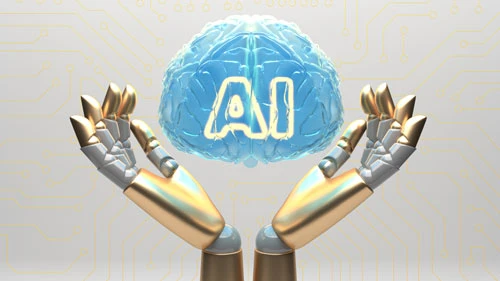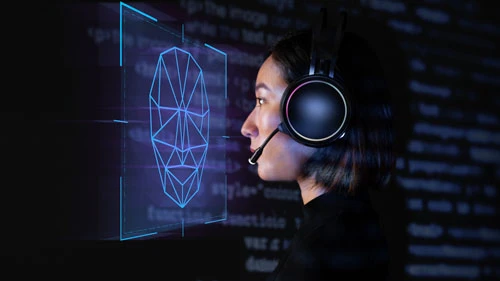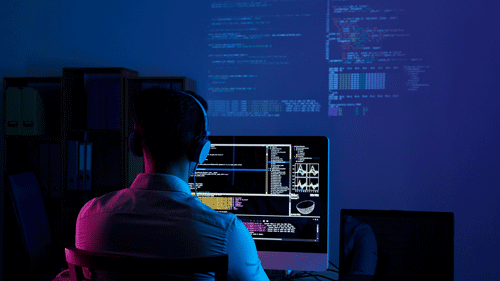Boosted by GenAI in the world of technology, code development has been vastly improved with efficiency without necessarily compromising originality. Nevertheless, behind all the wonders of automated coding stands a silent but important concern - the oversight of weak links within GenAI-created code.
The Promise of GenAI-Generated Code
GenAI's learning tool, which can imitate patterns from vast data sets, has taken the code creation process to never-before-seen levels of speed and complexity. This innovative method seeks to simplify programming, minimize mistakes, and improve overall performance in the field of coding.
Yet, as we delve into the intricacies of GenAI-generated code, a pertinent question arises: Does this advanced technology unintentionally miss weak links in code infrastructure?
Understanding Weak Links in Code
Weak links stand for vulnerabilities, inefficiencies, or potential points of failure that escape direct observation. These weak ties can be security gaps, poor performance, or interoperability issues. In contrast, human coders may demonstrate a natural ability to detect and address such weak linkages, but GenAI driven by data patterns might not display the same degree of discretion.
For example, imagine that a piece of the code requires particular error handling for an unusual edge case. Human coders might draw from experience and foresight to incorporate strong error-handling mechanisms. Nevertheless, since GenAI will not have the necessary experiential context, it might generate code that does not include such finesse handling to introduce vulnerability in its system unintentionally.
The Challenge of Contextual Awareness
One of the intrinsic ambiguities that come with GenAI is its lack of contextual awareness. It is very good at recognizing and replicating patterns from the data it was trained on but may not be great at understanding the broader context of a specific coding assignment. This drawback manifests itself when confronted with complex scenarios or specific needs where human intuition is essential to recognize and manage vulnerable links.
Coding is more than just syntax and structure; it involves an intimate understanding of project objectives and potential obstacles, along with a complex dance between various components. GenAI, although capable of generating code, might not fully understand the comprehensive view needed to detect and eliminate weak links.
The Human Touch: Complementing GenAI's Strengths
The importance of synergy between GenAI and human coders is crucial in pursuing maximally perfected code. Human coders have extensive work experience, analytical thinking capabilities, and the knowledge to support GenAI's strengths. With cooperation with human developers, the code produced by GenAI can undergo a critical review phase, thus allowing weak links to be identified and further strengthened.
In addition, implementing rigorous testing procedures at the development phase becomes necessary. Through rigorous testing, weak links that would otherwise remain overlooked in the code generation stage may be discovered, enhancing security and trust.
The Evolving Landscape: Continuous Improvement
With the development of GenAI technology, overcoming this challenge becomes an inherent part of its evolution. GenAI can keep improving its ability to detect and remove weak links in the generated code by adopting feedback mechanisms, continuous training with various datasets, and a better understanding of context.
Digital ecosystems are highly dynamic and continually introduce new challenges with varying levels of complexity. As an ever-changing tool in coding, GenAI must also adapt to this dynamism by evolving with the changing technology sector.
The best way to take advantage of the full extent of automated coding is through a symbiosis between human intelligence and GenAI-generated code. Although GenAI provides speed and accuracy like never before, the keen eyes of human coders with a sense of circumstantial awareness are incomparable when identifying weak links.
As the technology world changes rapidly, collaboration between GenAI and human coders is not just a choice but an imperative one. In recognizing the subtleties of weak links and striking a balance between automation, GenAI-generated code becomes efficient and resistant to threats.
With the growth of technology, AI and cybersecurity have engendered questions about threats that may come from the use of artificial intelligence. In trying to get into details on this complex dance, we must analyze and determine whether AI threatens cybersecurity or functions as a beneficial ally.
The Dual Nature of AI in Cybersecurity
AI is an intelligent technology that can analyze large datasets, detect patterns, and automate complex workflows, which helps in transforming the cybersecurity landscape. However, the disruptive force of this capability prompts concerns regarding whether AI may unwittingly become a threat that cybercriminals could weaponize for nefarious ends.
Recent statistics reveal a compelling narrative: Though roughly two-thirds of cybersecurity professionals feel AI is necessary for supporting their efforts in cyber protection, more than half report concern that adversaries will abuse AI to perpetrate even greater attacks. This polarity highlights the importance of a subtle understanding of how AI helps support and circumvent passive to active cybersecurity defenses.
AI as a Cybersecurity Ally
Given its ability to strengthen threat detection and response measures, it is easy to see AI's role as an ally in cybersecurity. Using machine learning algorithms, malicious patterns could be detected quickly, allowing for a quick response to potential cyber threats. AI is characterized by automation, improving routine security chores' efficiency and leaving cybersecurity professionals free to deal with complex problems.
Moreover, AI-based technologies such as predictive analytics allow organizations to forecast and proactively respond before they occur vulnerabilities. Being forward-looking, AI in cybersecurity becomes an indispensable asset to stay ahead of the ever-changing threat environment.
The Human Element in AI-Powered Cybersecurity
While AI technology is compelling, human expertise remains an irreplaceable part of cybersecurity. AI systems need human supervision since cyber threats are escalating, and making subtle decisions requires a person’s touch. Despite AI’s ability to analyze data and detect trends, there is a need for human analysis of context that ultimately determines future choices.
In fact, the combination of AI and human intelligence provides a dynamic defense against cyber threats. This partnership utilizes AI’s speed, precision, human intuition, and flexibility to create an effective cybersecurity system.
Container Security: A Critical Element in the Cybersecurity Equation
With containerization becoming more popular as a mode of application deployment, containers are becoming essential in the wider cyber security domain. Containers, self-contained environments in which application code and dependencies are encapsulated, present novel security challenges that innovative solutions must confront.
Various researchers assert that 60% of organizations have faced a security incident over the past year caused by insecure container configurations. This number emphasizes the need for strong container security measures. The role of AI in enhancing container security is central as it assists by analyzing huge datasets and spotting trends.
With advanced AI-powered container security solutions, organizations can identify and avoid vulnerabilities as they occur. These solutions can automatically monitor containerized environments, detect possible threats, and apply security policies. Using AI in conjunction with container security improves threat detection and simplifies incident response, allowing for timely and efficient mitigation against new risks.
Navigating the Future of AI and Cybersecurity
Whether AI is dangerous to cybersecurity becomes challenging and multidimensional in the technological labyrinth. However, a precarious balance shows AI’s weaknesses alongside its critical role in strengthening digital defenses.
With the continued evolution of cybersecurity, AI is emerging as an essential yet human-centric feature that requires a comprehensive response involving professional input and advanced technologies such as AI container security. The AI and human intelligence alliance build resilient defenses against the continually changing threat landscape.
In this reciprocal relationship, therefore, organizations need to see AI as a firm friend who helps strengthen the cybersecurity defenses with constant vigilance of possible hazards. This will enable us to use the transformative nature of AI without risking our cloud castles.
Table of Contents
- Introduction
- Deepening Focus on Supply Chain Security
- Rise of Shift Left Security
- Automation Takes Center Stage
- Zero Trust Principles Extend to the Cloud
- Integration with Cloud Security Platforms
- Conclusion
The cloud-native revolution has transformed how we develop and deploy applications. Infrastructure as code (IaC) and containerization with technologies like Docker and Kubernetes have become foundational elements for building and managing modern software systems. However, this rapid shift has also ushered in new security challenges. Securing IaC and cloud-native container environments is no longer an afterthought but a critical part of the development lifecycle.
With 2023 nearing its end, it's a natural time to look ahead and anticipate the trends that will shape IaC and cloud-native container security in 2024. Here are some key areas to watch:
1. Deepening Focus on Supply Chain Security
The recent SolarWinds and Log4j vulnerabilities highlighted the potential dangers within software supply chains. In 2024, expect increased scrutiny of IaC templates and container images for vulnerabilities and malware.
Secure software composition analysis (SCA) tools will become more sophisticated, integrating seamlessly with CI/CD pipelines to analyze dependencies and flag potential risks. Container registries will adopt stricter scanning and signing practices, making it harder for compromised images to slip through the cracks.
2. Rise of Shift Left Security
The traditional "detect and respond" approach to security is no longer sufficient in the fast-paced world of cloud-native development. In 2024, we'll see a stronger emphasis on "shift left" security, where security considerations are integrated into every stage of the development process. IaC tools will offer built-in security checks and best practices, prompting developers to write secure templates from the outset.
Container runtime environments will be hardened by default, with minimal attack surface exposed. Developers will embrace vulnerability scanners and threat modeling techniques to identify and address security risks early on proactively.
3. Automation Takes Center Stage
Managing security for complex IaC and container environments demands automation. In 2024, expect to see an explosion of automation tools across the security spectrum. Policy as code (PaC) frameworks will gain further traction, allowing organizations to define and enforce security policies for IaC and container deployments.
Security workflows will be automated, leveraging tools like vulnerability scanners, patch management systems, and incident response platforms to streamline detection, remediation, and reporting. Carbonetes is preparing for this shift towards automation, which will reduce human error and ensure consistent security across large and complex deployments if done right.
4. Zero Trust Principles Extend to the Cloud
The zero-trust security model, which emphasizes continuous verification and least privilege access, will increasingly find its way into cloud-native environments in 2024. Workload identity and access management (WIAM) solutions will become essential for controlling access to applications and resources within Kubernetes clusters.
Secure service mesh technologies will further mature, providing secure communication channels between microservices. Organizations will move away from static network segmentation and embrace dynamic, identity-based access controls to minimize the attack surface and prevent lateral movement.
5. Integration with Cloud Security Platforms
IaC and container security cannot exist in isolation. In 2024, expect closer integration between dedicated IaC and container security tools and broader cloud security platforms (CSPs).
CSPs will offer native capabilities for securing IaC and container deployments, allowing for centralized visibility and management of security risks across the entire cloud environment. Open-source tools and standardized APIs will facilitate seamless integration between different security solutions, enabling organizations to build tailored security stacks that fit their specific needs.
In 2024, organizations must be prepared to adapt their security practices to keep pace with the evolving threats and trends in the IaC and cloud-native container landscape. Organizations can build resilient and secure cloud-native environments that can withstand future challenges by focusing on supply chain security, embracing shift left security, automating workflows, adopting zero-trust principles, and integrating with broader cloud security platforms.
Table of Contents
- Introduction
- The Limits of AI Understanding
- The Bias Blind Spot
- The Creativity Gap
- The Importance of Explainability
- Conclusion
Artificial intelligence (AI) is revolutionizing our world, and software development is no exception. AI-powered coding tools are generating lines of code at lightning speed, promising increased efficiency and productivity. But amidst the automation boom, a critical question emerges: can we trust AI to secure the very code it writes?
While AI holds immense potential for streamlining development, relying solely on its black-box algorithms for security can be a recipe for disaster. Just as AI can build complex bridges, it can also unwittingly leave cracks for vulnerabilities to exploit. In this digital age, where cyberattacks are becoming increasingly sophisticated, a single security loophole can compromise entire systems and devastate businesses.
So, why should we still prioritize human involvement in securing AI-generated code? Here are four compelling reasons:
1. The Limits of AI Understanding
AI excels at pattern recognition and churning out vast amounts of code within defined parameters. However, it lacks the crucial human element of critical thinking and context awareness. AI doesn't understand the nuances of user behavior, potential attack vectors, or the broader ecosystem in which the code will operate. This limited understanding can lead to vulnerabilities that even rigorous testing might miss.
2. The Bias Blind Spot
AI algorithms are trained on datasets created by humans, and those datasets often carry unintended biases. These biases can inadvertently creep into the code, introducing potential security risks. For example, an AI trained on biased data might prioritize security for certain user groups over others, creating vulnerabilities for the less-protected groups. Human oversight is essential to identify and mitigate such biases before the code goes live.
3. The Creativity Gap
Cybercriminals are constantly innovating and devising new ways to exploit vulnerabilities. To stay ahead of this cat-and-mouse game, we need creative solutions that AI, in its current state, struggles to offer. Humans, with their diverse perspectives and ability to think outside the box, can conceive of unique security measures that outsmart malicious actors. Carbonetes’ team loves exploring the potential of AI but, at the same time, integrating vulnerability expertise where us, humans excel.
4. The Importance of Explainability
In today's increasingly transparent world, accountability for security flaws is paramount. When something goes wrong, we need to understand why and how it happened. Unfortunately, AI's decision-making processes are often shrouded in a veil of complexity. Humans, on the other hand, can explain their reasoning and thought processes, providing invaluable insights for improving future security practices.
So, how can we harness the power of AI while ensuring the secure development of code? The answer lies in a synergistic approach that combines the efficiency of AI with the vigilance and intelligence of humans. Here are some key strategies:
- Human-in-the-loop development: AI tools should be used as assistants, not replacements, for human developers. Humans should always review and adjust AI-generated code, ensuring it aligns with security best practices and project requirements.
- Security education and training: Developers need to be equipped with the knowledge and skills to identify and mitigate security vulnerabilities in AI-generated code. Regular training programs and awareness campaigns are crucial to building a security-conscious development culture.
- Robust testing and validation: Even with human oversight, rigorous testing and validation processes are essential for catching any remaining vulnerabilities. Automated testing tools can be combined with manual penetration testing to ensure comprehensive security assessment.
- Transparency and explainability: AI developers should strive to make their algorithms more transparent and explainable. This allows for a better understanding of potential biases and facilitates collaboration between humans and AI in securing the code.
By embracing this collaborative approach, we can unlock the full potential of AI in software development while safeguarding against lurking security threats. Remember, in the world of code, it's not just about speed and efficiency; it's about building strong, secure systems that can withstand the challenges of the digital age. And for that, the human firewall remains an indispensable line of defense.


